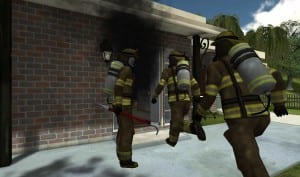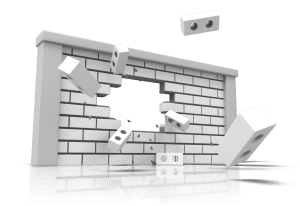
Anyone who’s been frustrated knows it can consume a lot of your mental energy and thinking space. This can significantly impact your situational awareness. In fact, depending on the level of frustration, your brain can be hijacked by all-consuming thoughts about what is causing the angst. While operating at an emergency scene, frustration may draw your attention away from perceiving or understanding critical inputs that form awareness.
Some sources of frustration
There are many things that can cause frustration at an emergency scene. As I reflect back on my experience and conversations with thousands of responders, I can offer this small list of sources of frustrations that can impact your situational awareness:
1. Receiving incomplete or inaccurate information from dispatch about the nature or details of the of the emergency you are responding to.
2. Delayed response times because you had to wait at the station for a crew to come from home before you could respond.
3. Fellow crew members that did not know how to perform their jobs effectively (this includes not only technical job knowledge but also being physically unfit to perform the duties, causing a crew member to fatigue quickly).
4. Tasks not being completed as quickly as you expected your crew to complete the tasks or tasks not being completed at all.
5. Independent actions (i.e., freelancing). Crew members performing actions that are not consistent with the overall incident objectives, causing confusion and safety concerns.
6. Crew members complaining about having to do their jobs or complaining about the some aspect of serving the customer.
7. Inadequate equipment to get the task done efficiently or general lack of equipment or other resources.
With little effort, I am confident you could easily add to the list of things that have frustrated you from time to time while operating at incident scenes. And, if you’re being honest, you’d probably admit that your mind wasn’t completely on-task while you were pre-occupied with the frustrating issue or condition.
Tangible examples
I recall two really good examples from the interviews I conducted on my journey to uncover and research the barriers that impact situational awareness… of which frustration is one of those barriers. In both examples the outcomes resulted in the effected member’s attention being drawn away from other critical tasks.
The first examples comes from an incident commander who assigned an interior crew the task of looking for fire extension after a fire had been knocked down in a single family residential dwelling. The smoke and fire conditions had significantly improved following the knockdown and this commander was feeling the incident was well under control.
But then conditions started to degrade again. The smoke was transitioning from white to gray to black. The velocity of the smoke was increasing too, indicating the smoke was getting hotter. The commander began to get frustrated, causing him to hyper focus on the actions of the overhaul crew.
The commander called the interior crew on the radio (using what the commander described as a frustrated voice). The crew did not answer. The commander called again. Still the crew did not answer. The commander called a third time and the crew answered. The commander demanded an update report on the crew’s progress, knowing already from the exterior that conditions were getting worse and the fire was likely active in the walls and in the attic.
 The crew indicated they were unable to get the walls opened up due to the type of construction. This was not the report the commander wanted to hear and he went from being frustrated to being furious. With that report, the commander donned a breathing apparatus and made entry into the dwelling to see for himself why this crew was not accomplishing the task.
The crew indicated they were unable to get the walls opened up due to the type of construction. This was not the report the commander wanted to hear and he went from being frustrated to being furious. With that report, the commander donned a breathing apparatus and made entry into the dwelling to see for himself why this crew was not accomplishing the task.
This commander allowed his frustration to reduce what should have been a broad-incident situational awareness and caused him to become fixated at the task level – in this case the lack of task performance – of a single crew. As the commander engaged in a hands-on task-level activity his ability to manage the incident eroded.
The second example comes from a lieutenant who was operating on the roof of a commercial building fire. His crew was completing the task of cutting a ventilation hole. The smoke conditions on the roof were significant enough to obscure visibility and crews were using their breathing apparatus.
At one point additional firefighters came to the roof. The lieutenant acknowledged some frustration with that because he had enough personnel on the roof to perform the task and felt the additional personnel were  unnecessary and he believed they were freelancing.
unnecessary and he believed they were freelancing.
If this were not enough frustration for the lieutenant, several of the firefighters who came to the roof were not wearing their breathing apparatus face pieces under conditions that clearly warranted them being worn. The lieutenant addressed this concern right away with the personnel and instead of ready compliance, the crew’s officer became argumentative and refused to have his crew don their face pieces.
The lieutenant’s attention was clearly on the frustrating issue of dealing with these recalcitrant firefighters. And, with his attention completely off task, the lieutenant turned around and walked right into the hole that his crew had just completed cutting. The lieutenant lost his balance and fell down. Fortunately he did not fall into the hole. He did however, receive injuries related to his fall.
Dr. Gasaway’s Advice
 It can be very difficult to control your frustration at an incident scene, especially when expectations are not being met. If you find yourself becoming frustrated, and thus fixated, on something happening, try these suggestions:
It can be very difficult to control your frustration at an incident scene, especially when expectations are not being met. If you find yourself becoming frustrated, and thus fixated, on something happening, try these suggestions:
1. Be mindful at all times of the role you are playing and how important it is for you to stay focused on your role for your safety and the safety of others.
2. If the source of frustration can be set aside and dealt with later, delay addressing it at the incident scene. Of course matters of safety should be addressed immediately to prevent harm to members and civilians.
3. Employ a stress reduction breathing technique: Breathe in on a four-count. Hold for a four-count. Breathe out on a four-count. Delay your next inhalation for a four-count. This will cause a small increase in carbon dioxide levels in the blood and slow the release of chemicals that can hyper-focus attention. The old adage of “take a deep breath” has some merit.
4. If you are in the command role, consider delegating the frustrating issue to a subordinate and let them resolve it. This will allow you to keep your focus on the important task of commanding the big-picture incident.
5. If you must address the source of frustration, be courteous and professional and adopt a mindset of being helpful. Avoid confrontational language or demeanor (like using your frustrated, annoyed or agitated voice).
There is too much at stake if your situational awareness erodes as a result of frustration. And if your eroded situational awareness results in a casualty, you’ll be very disappointed in yourself that you yielded your awareness of your critical role to your frustration.
Action Items
 1. Discuss a time when your awareness was drawn off-task by a frustration.
1. Discuss a time when your awareness was drawn off-task by a frustration.
2. Discuss some strategies you have used to reduce the impact of frustration.
3. Discuss strategies for addressing frustrating issues in ways that will not make matters worse.
4. Find that person who always seem to be calm under pressure and ask him or her to share their best practices with you.
_____________________________________________________

If you are interested in taking your understanding of situational awareness and high-risk decision making to a higher level, check out the Situational Awareness Matters Online Academy.
CLICK HERE for details, enrollment options and pricing.
__________________________________
Share your comments on this article in the “Leave a Reply” box below. If you want to send me incident pictures, videos or have an idea you’d like me to research and write about, contact me. I really enjoy getting feedback and supportive messages from fellow first responders. It gives me the energy to work harder for you.
Thanks,

Email: Support@RichGasaway.com
Phone: 612-548-4424
SAMatters Online Academy
Facebook Fan Page: www.facebook.com/SAMatters
Twitter: @SAMatters
LinkedIn: Rich Gasaway
Instagram: sa_matters
YouTube: SAMattersTV
iTunes: SAMatters Radio
iHeart Radio: SAMatters Radio

Pingback: Holiday Safety in the Workplace – EHS Momentum